Thriving Environment
READ THE STORIES: Power and Clean Energy for Health | Energy Transparency and Data Accessibility | An Equitable Clean Energy Transition in Mongolia
Power and Clean Energy for Health
Across sub-Saharan Africa, over 100,000 health facilities lack access to reliable electricity and internet connections. This gap threatens health when clinics can’t keep the lights on or reliably provide patients with oxygen and other life-saving care. Deprived of reliable power, they also can’t refrigerate vaccines and other temperature-sensitive medical commodities or use the digital tools that modern medicine relies on.
Millions of people will lack equitable access to life-saving health services without sustainable funding and cross-sector coalitions to connect health facilities across the region. The Abt-led Health Electrification and Telecommunications Alliance (HETA) is Power Africa’s flagship initiative to meet these daunting challenges.
HETA was launched in 2022 as one of USAID’s largest-ever Global Development Alliances. HETA’s ambition is to unlock funding and build coalitions to electrify health facilities across sub-Saharan Africa and expand their access to internet networks–all powered by clean energy. The goal is to reach 10,000 health facilities and improve health services in the communities they serve.
HETA works to create durable partnerships and business models for sustainable health facility electrification and digital connectivity, emphasizing sustained clean energy access and reduced greenhouse gas emissions through solar. This alliance is designed to amplify the U.S. government’s $47 million investment by mobilizing at least $50 million in investment and co-funding from the public, private, and social sectors. This money will fund the installation of reliable, renewable power and mobile network or internet access for 10,000 health facilities in Africa by 2027.
HETA has three goals:
- Increase public, private, and social sector partnerships to implement health facility electrification and digital connectivity
- Grow the quantity and diversity of resources, especially funding, for health facility electrification and digital connectivity
- Design inclusive and sustainable business models to ensure operations and maintenance (O&M)—a longstanding challenge for renewable energy in the health sector
Abt is the lead integrator for HETA, with founding partners RESOLVE, bechtel.org (Bechtel’s social enterprise), Orange, and a growing alliance of partners in the health, energy, and telecommunications sectors. Partnerships are the beating heart of HETA’s work—delivering funds, equipment, technical assistance, and in-kind resources to design, install, and sustainably operate and maintain renewable energy systems for healthcare, linked to mobile or internet networks.
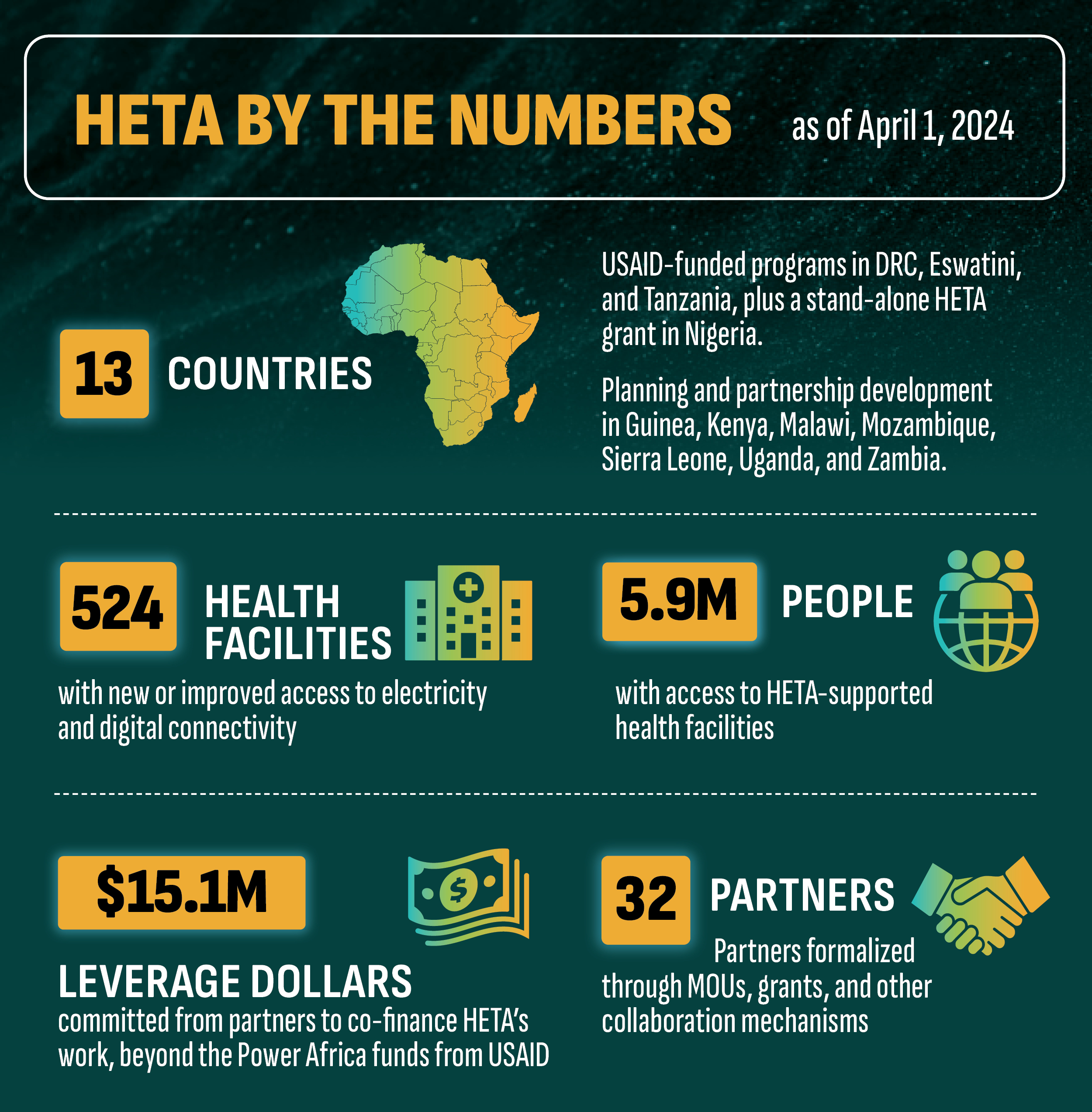
Description automatically generated with medium confidenceIn our first 18 months, we quickly laid a strong foundation toward our goal. As of April 2024, we leveraged over $15 million dollars committed from partners to co-finance HETA’s work, beyond the Power Africa funds from USAID and established 32 partnerships formalized through MOUs, grants, and other collaboration mechanisms. Already, 524 health facilities have new or improved access to electricity and digital connectivity, reaching nearly 9 million people with access to improved health services.
We are active in 13 countries, with planning and partnership development efforts underway in several more. At the country level, we are optimizing USAID’s investments in the private health sector.
In Tanzania, for example, HETA and our local partners are improving private healthcare providers’ ability to meet clients’ needs and supporting new service delivery models that make health services more convenient and comprehensive.
In the past, Clementina Clemency Mwamboneke, owner of Nkwabi pharmacy shop, dealt with downtime and out-of-stock medicine due to frequent power outages and theft. Now, solar panels provide electricity during outages, and her new tablet allows her to access pharmaceutical management software, streamlining her operations.
The shop is safer, more reliable, and attracts more customers. The upgrades made Mwamboneke think differently about the future, and she’s considering opening two more shops. Given a rapid increase in sales, she has been able to double her daily income.
“I used to make at least 20 to 30 Tanzanian thousand shillings a month, but nowadays I make 50 to 70 thousand [roughly $20-27 USD],” she said. “My sales have increased a lot.”
The upgrades are expanding her customers’ health and wellbeing, too. HETA is developing customized, locally-led business models so the energy and connectivity systems will continue supporting high-quality health service delivery and access to data well into the future.
With local partners such as Maisha Meds and Zola Electric, we have provided 250 drug shops with laptops and pharmaceutical software. We also installed solar panels at over 280 facilities.
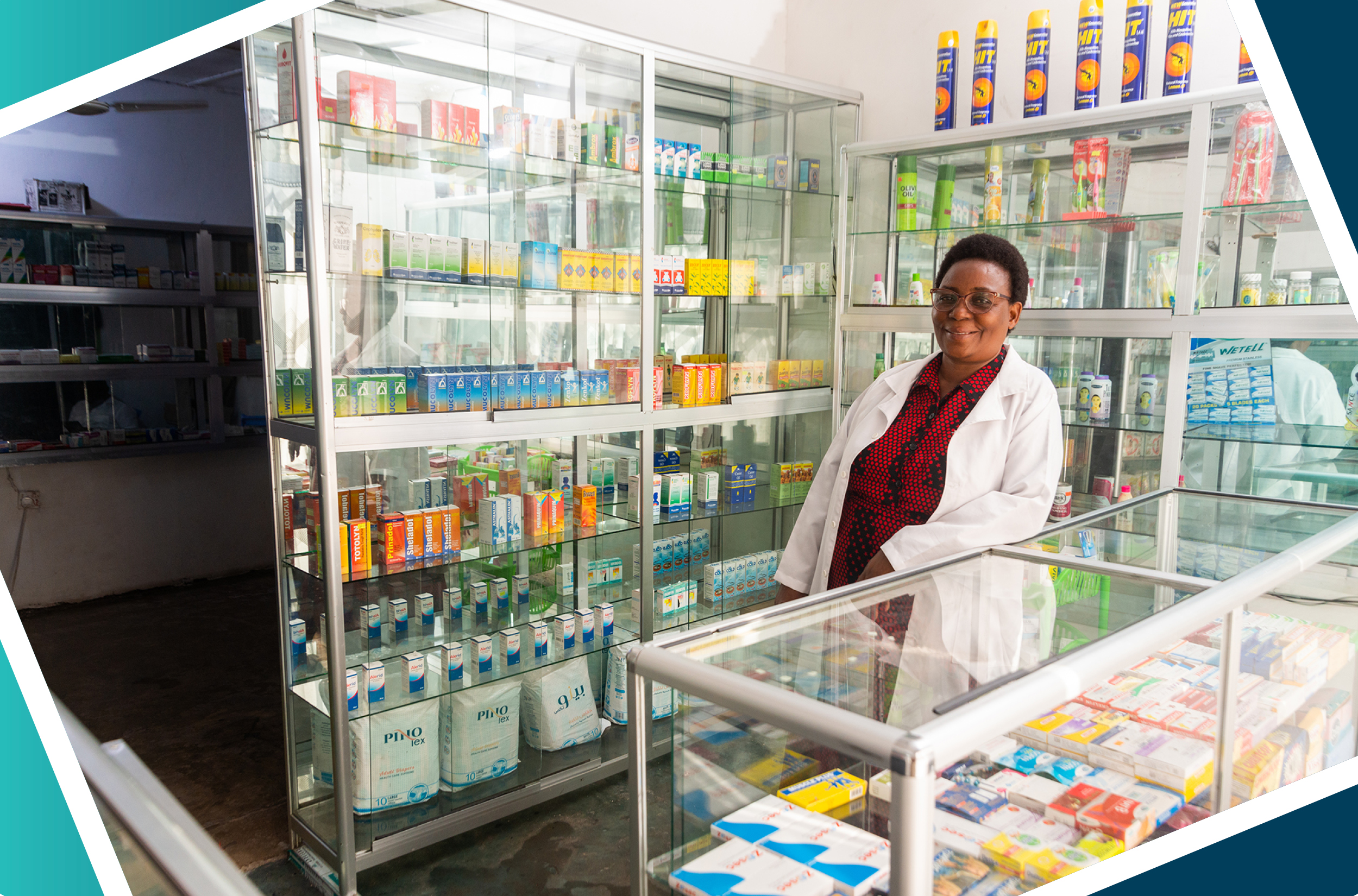
HETA is unique among Power Africa programs in our ambitious scope and close ties to global health priorities. We look to unlock significant funding and partnership networks that will transform these realities for thousands of health facilities and the communities they serve. Our vision looks beyond HETA’s first five years—we are already doing the groundwork to create the governance structures and funding base for an independent organization that can continue supporting energy access and digital inclusion for the health sector well into the future.
LEARN MORE: HETA: Powering Health with Clean Energy in Africa | HETA First Year Annual Report | How Can We Deliver Reliable Energy to Africa’s Health Sector? | Why We Should Invest in Productive Use of Energy for Health
PROJECT: Health Electrification and Telecommunications Alliance (HETA)
CLIENT: U.S. Agency for International Development (USAID) Global Development Alliance
![]()
![]()
![]()
![]()
Energy Transparency and Data Accessibility
Do you want to know the relationship between your electricity usage and the environment? Or the emissions rate of the electric power plant down the street? The Environmental Protection Agency’s (EPA) Emissions & Generation Resource Integrated Database (eGRID) can help answer those questions, provide data to help businesses or homeowners understand the benefits of switching to cleaner energy sources, support policy makers, and inform environmental justice initiatives.
eGRID is a comprehensive public source of data on the environmental characteristics of almost all electric power generated in the U.S. The sector is the second largest producer of greenhouse gases (GHG), behind only transportation, and contributes nearly a quarter of total U.S. GHG emissions. The data come from electricity-generating plants that provide power to the electric grid and report data to the U.S. government. eGRID informs policymaking and helps address expanding needs of people, organizations, and communities to understand the source of their electricity and the environmental impact of their electricity usage.
For nearly 12 years, Abt has worked closely with EPA to develop eGRID, keep it up to date, and transform the website and accompanying tools to help people use and visualize accurate power and emissions data. Data reported via eGRID include resource mix for renewable and nonrenewable generation, heat input, and mass emissions of and emission rates for carbon dioxide, nitrogen oxides, sulfur dioxide, particulate matter, methane, and nitrous oxide. Data are presented at the power plant level and aggregated to state, U.S. total, and three types of power grid regions.
Abt regularly updates eGRID data, transforming it into a powerful tool for tracking progress toward the U.S. government’s goal to achieve a carbon pollution-free electricity sector by 2035 and net-zero emissions economy-wide by 2050.
In 2020, Abt worked with EPA to achieve an important milestone: updating eGRID data on an annual basis for the first time. This was achieved through innovative efforts to automate data analysis and data quality assurance. The automations cut the cost to develop each eGRID release from about $750K to under $100K. This left more resources available for innovation, interactive tools, and analytical enhancements.
This same year, we eliminated static data spreadsheets and used the extra resources to create the eGRID Data Explorer, dynamic and clickable maps for data visualization. This made the eGRID website more user-friendly, with a flexible interface and an emphasis on data visualization to enhance the user experience. In 2021, we began supporting EPA’s Power Profiler, making the data available by zip code and traceable to individual power plants. Then in 2022 we developed Power Plants & Neighboring Communities, which highlights key demographics and a community’s potential susceptibility to environmental exposure from power plants. This knowledge can be instrumental in environmental justice activities.
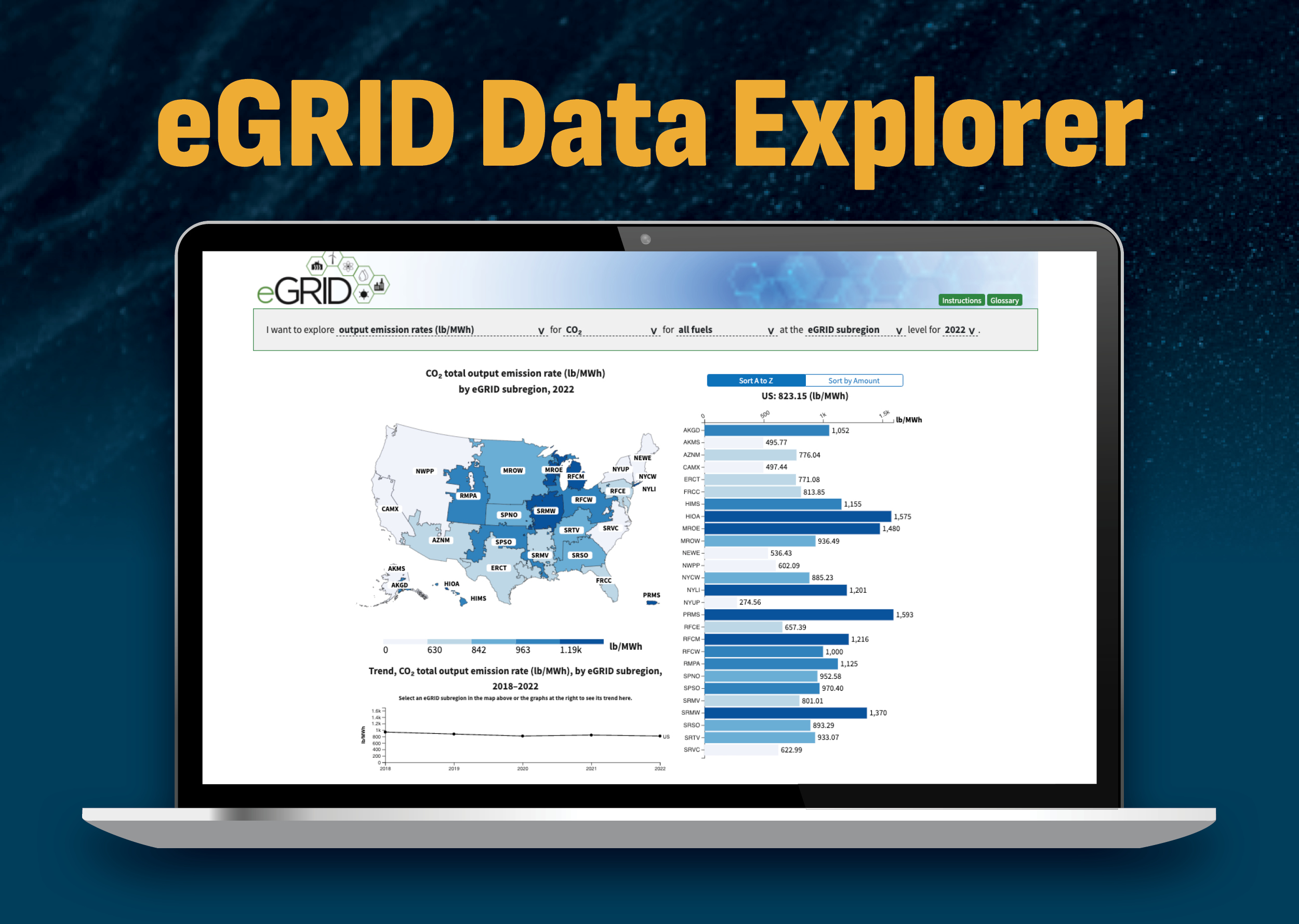
With accurate and precise data, eGRID has become a potent tool for informed decision-making. Annual data improves the timeliness of emissions accounting and emissions reduction policymaking. Governments, scholars, students, and others—including individual consumers—can use the data in a wide variety of ways. They can estimate indirect emissions from electricity purchases and develop greenhouse gas inventories. They can calculate carbon footprints. And they can estimate avoided emissions from programs and projects that reduce consumption of grid-supplied electricity. As the demand for cleaner sources of electricity like solar and wind grows, these tools provide important insights on the environmental impacts of people’s options.
eGRID data is used by:
- Various applications and programs within EPA such as the Household Greenhouse Gas Emissions Calculator, Greenhouse Gas Equivalencies Calculator and Power Plants and Neighboring Communities
- The California Air Resources Board, Climate Registry, Climate Action Reserve, and Greenhouse Gas Protocol in estimating emissions from electricity purchases in the U.S.
- Research institutions such as Oak Ridge National Laboratory for the Combined Heat and Power and Emissions Savings Calculator and National Renewable Energy Laboratory for the Distributed National Carbon Sequestration Database and Geographic Information System (NATCARB)
- Academic institutions such as University of California, Berkeley’s CoolClimate Carbon Footprint Maps
eGRID has thousands of users, and Abt-led improvements continue to enhance the user experience. From late 2022 to late 2023, eGRID users were more engaged on the site in terms of views and downloads, with page views increasing nearly 18 percent. And from 2021 to early 2024, usage of the eGRID Data Explorer has nearly doubled.
In late 2023, Abt started a new phase of work with EPA to develop the next generation of eGRID tools to support EPA’s new Low Emissions Electricity Program. We have been engaging stakeholders such as data analysts, corporations, students, and environmental justice communities to determine how they use eGRID data and what features will enhance the usability of eGRID for all.
In collaboration with EPA, we want to meet the growing demand for highly accurate emissions data—especially with spatial and temporal granularity – and the desire for user-friendly tools and easy-to-interpret visualizations. Communities and non-profits want to help educate and raise awareness and seek to tell a stronger story in their work.
Going forward, eGRID enhancements will support expanded education, awareness building, and community environmental justice priorities. Future updates will enhance data storytelling capabilities, make the data more dynamic for emerging regulatory and reporting frameworks, and ultimately position eGRID as the single source of truth for grid emissions reporting.
LEARN MORE: eGRID: Estimating Air Pollution Emission Rates for Power Generation in the United States
PROJECT: Emissions & Generation Resource Integrated Database (eGRID)
CLIENT: U.S. Environmental Protection Agency
![]()
![]()
![]()
An Equitable Clean Energy Transition in Mongolia
Mongolia’s electricity and heating sectors face numerous challenges: reliance on coal-fired plants and an antiquated infrastructure that struggles to meet demand. Limited reserve capacity means the government often must import expensive power from Russia and China. The coal industry’s outsized influence has hindered adoption of what would be bountiful renewable energy thanks to the country’s abundant solar and wind resources. More people are burning cheap, dirty coal for heat in informal settlements in the urban capital, contributing to some of the world’s worst air quality and poor health outcomes.
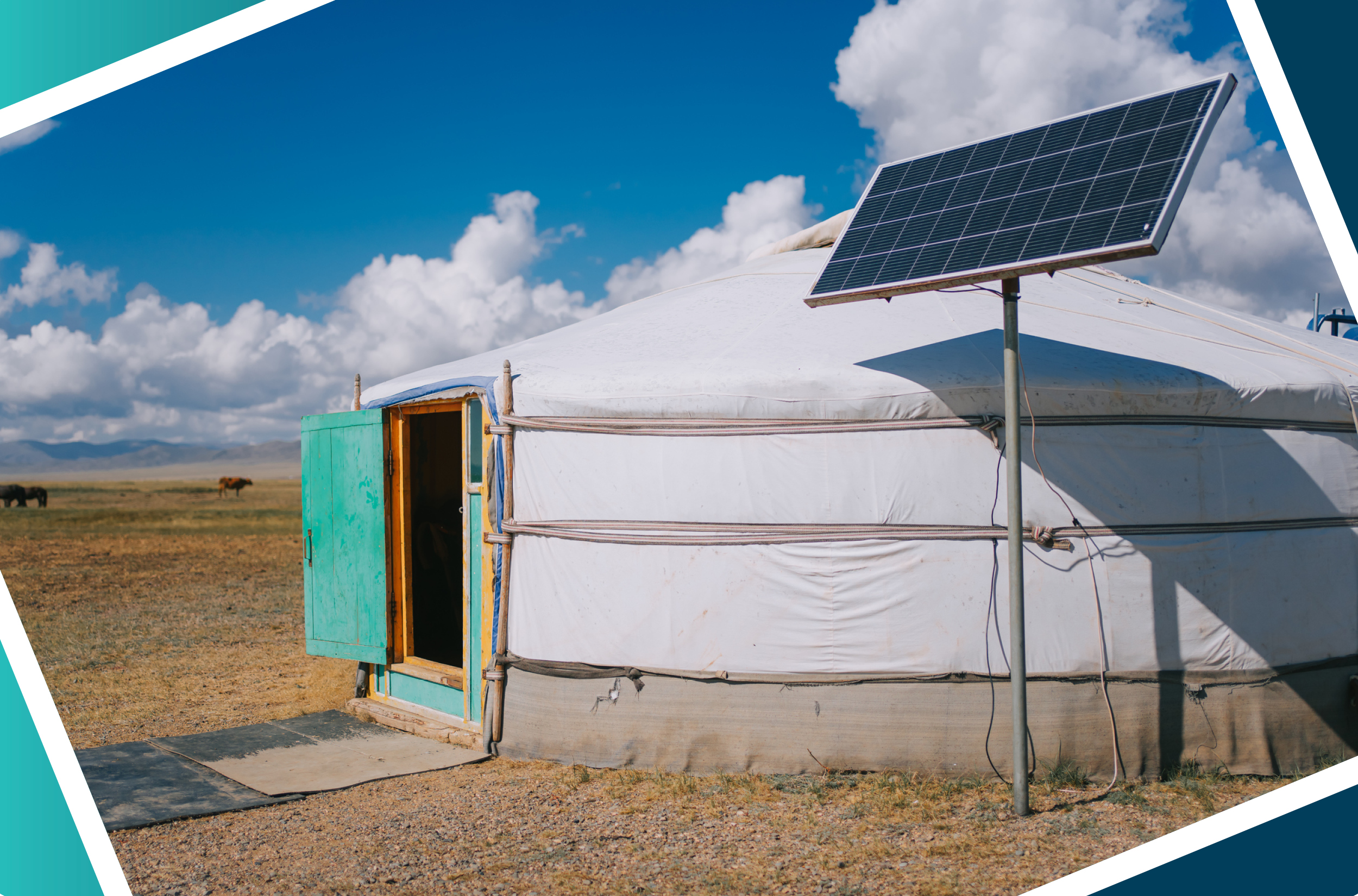
Mongolia’s potential to harness renewable energy and its government’s goal of becoming an energy exporter provide a fertile opportunity to advance energy reforms and attract international investors. The U.S. Agency for International Development (USAID) launched the Abt-led Mongolia Energy Governance (MEG) activity in 2022 to build broad coalitions around politically sensitive reforms and promote self-reliance in Mongolia by bolstering energy sector governance.
MEG promotes a secure, stable, diversified, modern, and self-reliant energy sector through improved governance. We work with government and energy sector partners to increase market competitiveness, provide incentives for private investment, increase resilience to natural and human-induced shocks (including cyberattacks), and support the adoption of modern clean energy technologies.
Among other things, we:
- Promote transfer of knowledge and tools to strengthen the use of data analysis in planning and in assessing operational performance
- Enhance the government’s capacity to issue and award transparent procurements to diversify the investment portfolio and move toward a market-based sector
- Support a well-functioning, competitive energy sector to increase customer choices, improve service quality, increase energy security, maintain accountability for ratepayers, and build confidence among domestic and international financiers for advanced energy systems and technologies.
MEG is also addressing another challenge within the Mongolian energy sector: the underrepresentation of women as leaders and decision-makers. This is reflective of the global situation, where women comprise only 22% of the conventional energy sector and only 12% of leadership roles.
Abt’s equity strategy is to ensure a gender-just clean energy transition. Our Gender Equality and Social Inclusion (GESI) interventions include a combination of behavior change, awareness-raising, capacity building, and upskilling to empower women and increase their engagement in the sector. We promote the integration of women and youth into Mongolia’s heating and energy sectors by enhancing their technical and leadership skills, championing role models, and encouraging reflection on deep-seated cultural norms to promote transformative change in the sector.
In 2023, MEG:
- Contributed to the Ministry of Energy’s draft sectoral Gender Action Plan, and was appointed to serve on the GAP implementation working group
- Ensured women were well-represented in all technical trainings, to provide them with the necessary skills to thrive in emerging fields
- Developed and rolled out an e-module titled GESI in Energy and began developing a second e-module on integrating GESI in all stages of the energy project cycle.
- Launched the Energy Sector Women’s Leadership Initiative (ESWLI), tailored to provide junior and mid-level women with management, leadership, and professional skills to advance in their current roles
- Promoted male allyship through a presentation and an all-male panel discussion at the International New Energy Summit to gain the support and involvement of men, who occupy most decision-making positions in the energy sector, in gender equality initiatives
- Delivered gender-based violence and harassment training for stakeholders, to raise awareness around this pervasive issue in Mongolia’s masculinized energy sector.
As part of its efforts to promote women’s engagement in the energy sector, MEG also delivered communications and awareness-raising initiatives, including a well-attended virtual experience-sharing session featuring four women engineers for International Women in Engineering Day in June 2023.
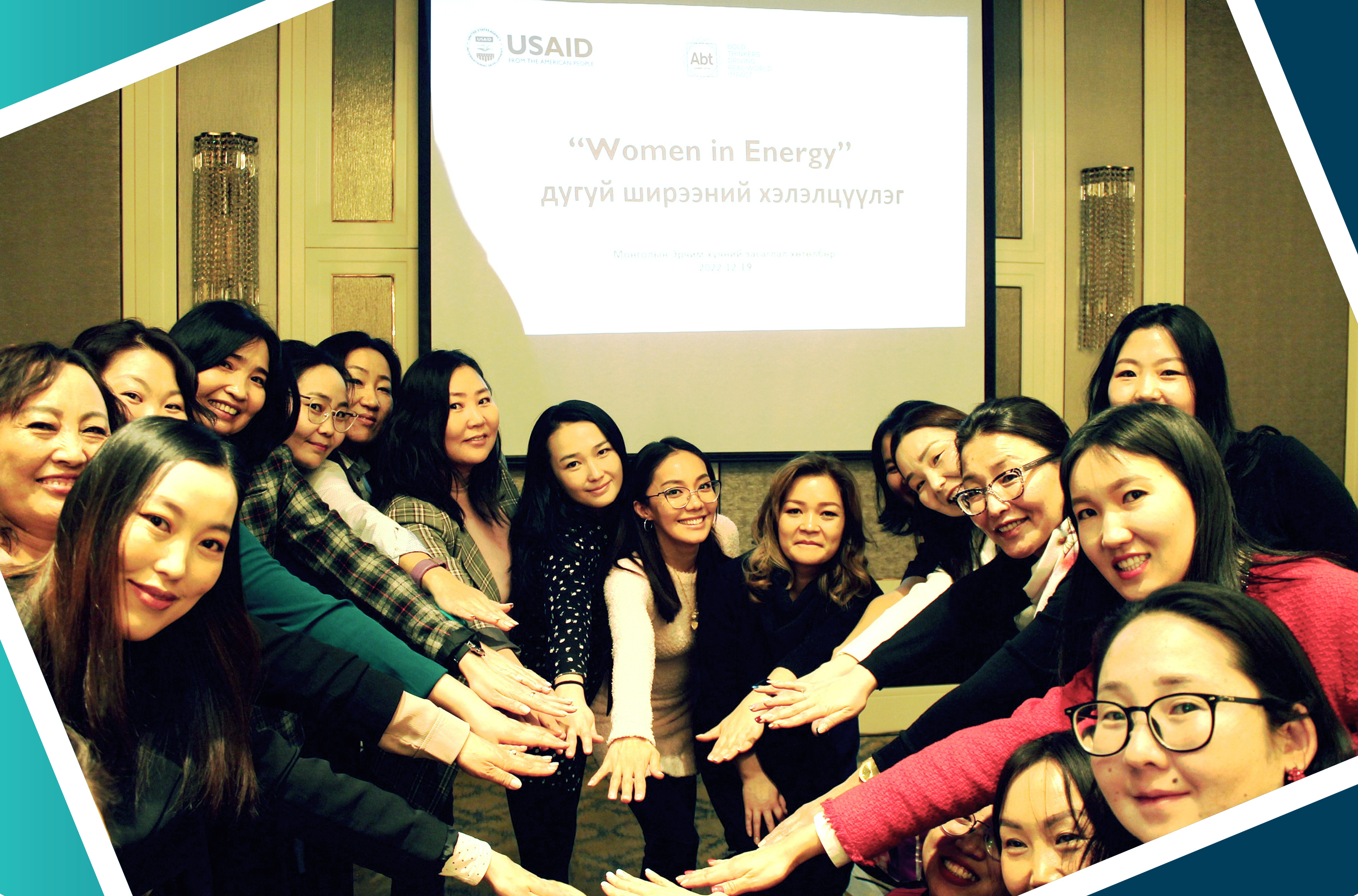
To date, 1,727 people (40 percent women) have directly benefited from MEG's interventions, including technical study tours, training, and workshops. Abt and USAID MEG are enabling Mongolia’s private energy sector to create jobs and economic growth while reducing pollution, ultimately leading to a self-reliant energy sector.
MEG also provides opportunities for women to receive skills and leadership training to assist them in assuming decision-making roles in the energy sector and to normalize women’s involvement in a workforce made up of predominantly men.
“I wish I had attended the ESWLI leadership training three or five years ago. Attending this training was beneficial for my promotion as the only woman heading the Department of the Energy Regulatory Commission.” says Altantuya Dorjsuren, Head of Consumer and Rural Regulation Department.
Access to affordable, reliable, and modern energy services is critical to lowering GHG emissions and toxic air pollutants from the country’s energy sector and reducing Mongolia’s carbon footprint. MEG activities are our first step toward larger goals for the country that contribute to global climate action targets. By 2030, Mongolia aims to become energy self-sufficient. By 2040, Mongolia would like to then export clean energy to neighboring countries in the region. Having achieved these important milestones, the country hopes to increase green energy production and ensure sustainable energy supply to the region by 2050.
MEG activities advance a gender-just energy transition in the country, and women leaders agree this is critical. One of them is Chimegtsetseg Batmunkh, founder and director of Ultrasonic LLC, which is promoting the utilization of Mongolia’s renewable resources through small-scale engineering solutions. Batmunkh, recently featured in MEG’s Women in Energy series, says that engaging women can strengthen systemic improvements. She adds that they can “contribute not only to the industry's growth but also to a more sustainable and efficient future for Mongolia's energy landscape.”
LEARN MORE: A Brighter Tomorrow for Mongolia’s Energy Sector
PROJECT: USAID Mongolia Energy Governance Activity
CLIENT: U.S. Agency for International Development (USAID)
![]()
![]()
![]()
![]()
![]()

MISSION IMPACT REPORT 2024: Explore
OUR WORK: Overview | Good Health | Economic Security | Effective Governance | Equity & Inclusion | Thriving Environment
OUR PEOPLE AND OPERATIONS: Overview | Employee Wellness | Financial Health | Ethics & Governance | Equity as Our Cornerstone | Environmental Responsibility
OUR COMMUNITIES: Overview
